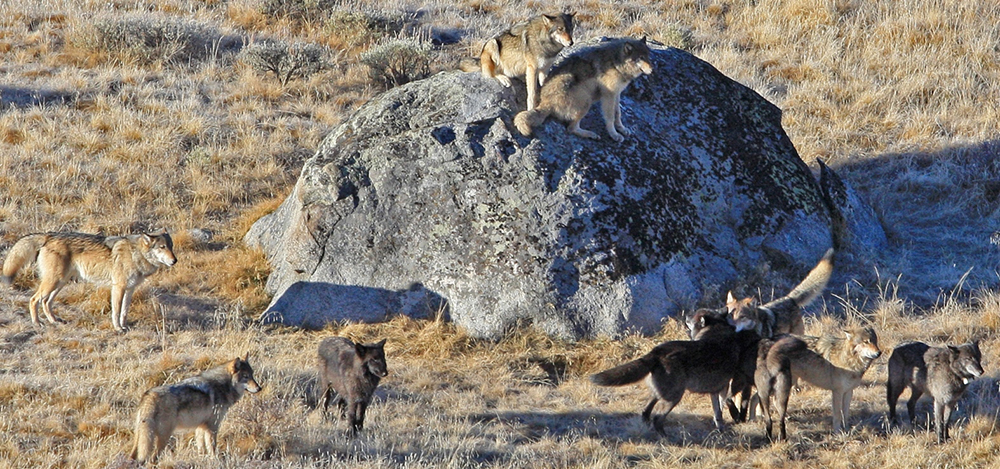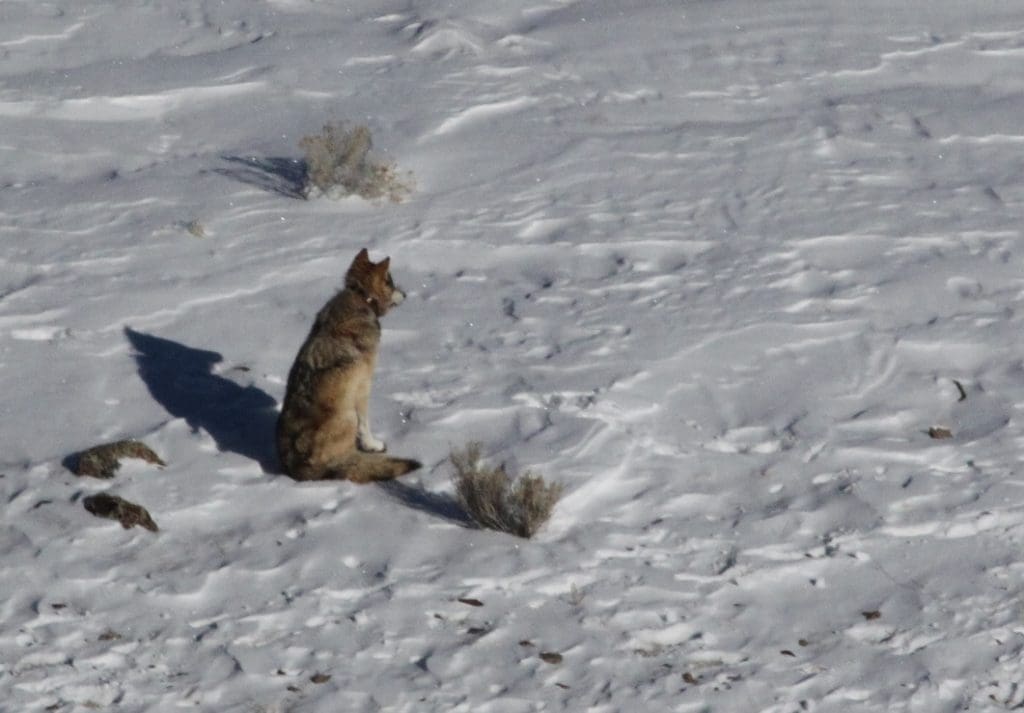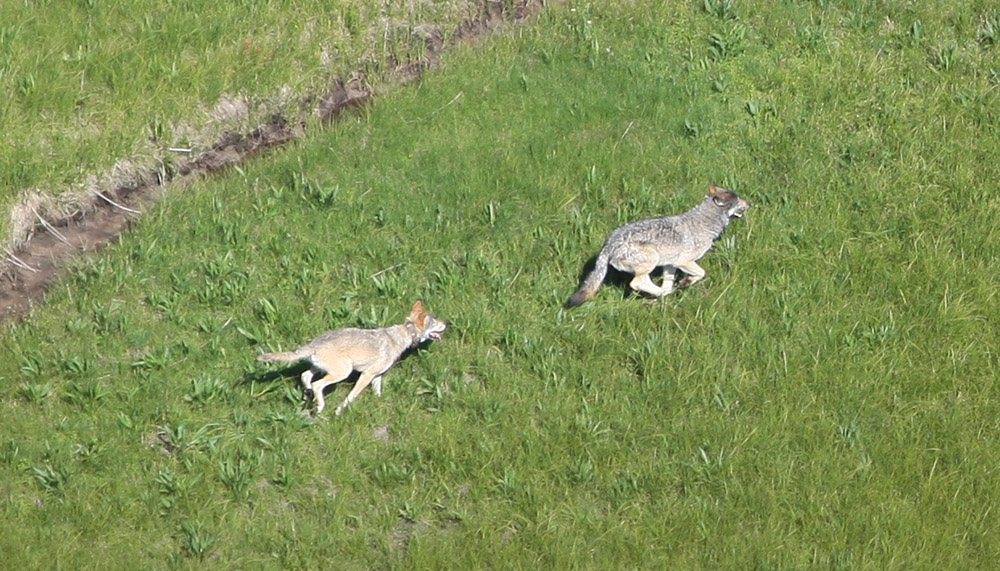A traveling wolf is the definition of energy conservation but with an almost fluid grace. High wrists and ankles propel the wild canine so that only the feet show real movement — except perhaps in winter, when a thick ruff of fur around the neck bounces with each step. A narrow chest with a deep keel holds lungs that can keep up this pace for dozens of miles.
In the northern end of Yellowstone National Park, I watch as a pack of wolves — one of approximately 75 packs in the Greater Yellowstone Ecosystem (GYE)—wake from their mid-afternoon nap and begin to travel.
I note into my digital recorder: “The alpha male leads with the alpha female second, then three pups follow as a gray yearling runs to catch up.”

Twice each year crews working for the Yellowstone Wolf Project are assigned to follow and record the kills, movements and behavior of a wolf pack living in Yellowstone’s Northern Range. Project Leader and Senior Biologist Doug Smith has called the 30-day winter studies “cornerstones of the Wolf Project.”
Now in its 21st year since wolf reintroduction and with 41 winter studies completed, the Wolf Project benefits from the open valleys in northern Yellowstone — areas conducive to collecting data but also ground-truthing radio and GPS data through direct observation.
Each day crews determine if their study pack made a kill and collect samples from those kills to figure out why a particular individual was targeted. They record the wolves’ interactions with bears, coyotes and other wolf packs. But one of the most common behaviors they record is traveling — both within their own territory and into the territory of other packs, day and night, sun or snow.
The regular visibility of these large carnivores is a rarity in the northern U.S. Rocky Mountains; a region in which Y2Y has worked to establish new protected areas and wildlife corridors since 1997. Although it is one of the largest protected areas in the entire montane swathe, Yellowstone National Park is only 10 percent of Greater Yellowstone — the southern anchor of the Y2Y focus area.

From a stock of 31 wolves reintroduced in 1995 and 1996, the population in the GYE has grown to over 500 wolves and is considered one of the most successful conservation endeavors of the 20th century. And northern Yellowstone offers much in the way of data on the effects of wolves on the ecosystem.
So while the crews keep track of pack movements, there are always the individual wolves that seem to disappear. They show up in places hundreds of miles away — Utah, South Dakota, California. Thousands of years of evolution have designed them for it.
The data collected on wolves and their effects can help make informed wildlife decisions in all areas of the northern Rockies — a mountainous band with varying degrees of human presence, and the best travel avenues for a wayfaring canine.
Guest post by Kira Cassidy.
Kira is a research associate with the Yellowstone Wolf Project. This story was based on her field work in Yellowstone National Park, where wolves were reintroduced in 1995 after a 70-year absence.


